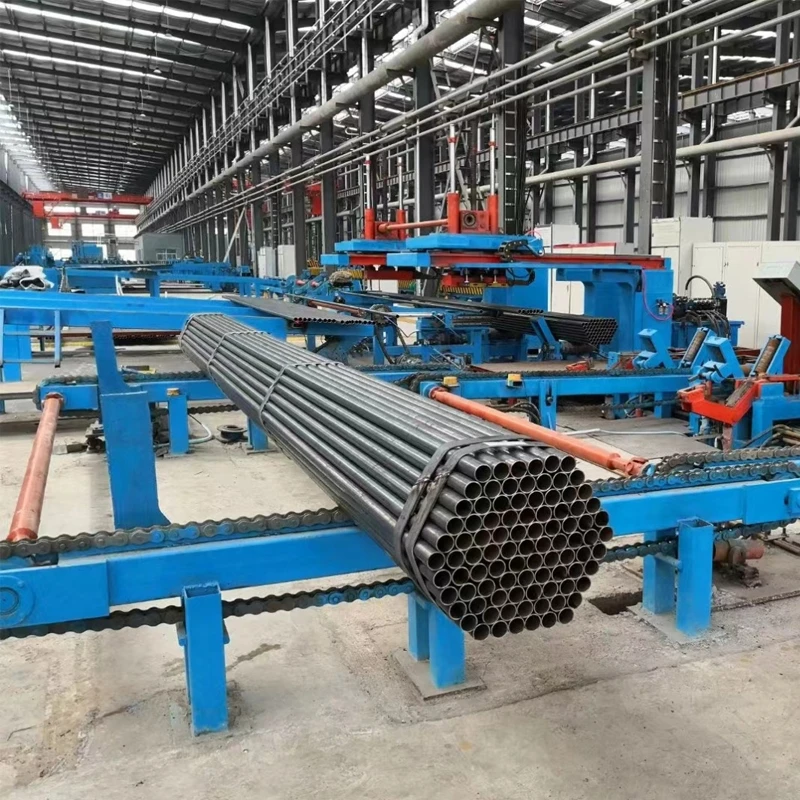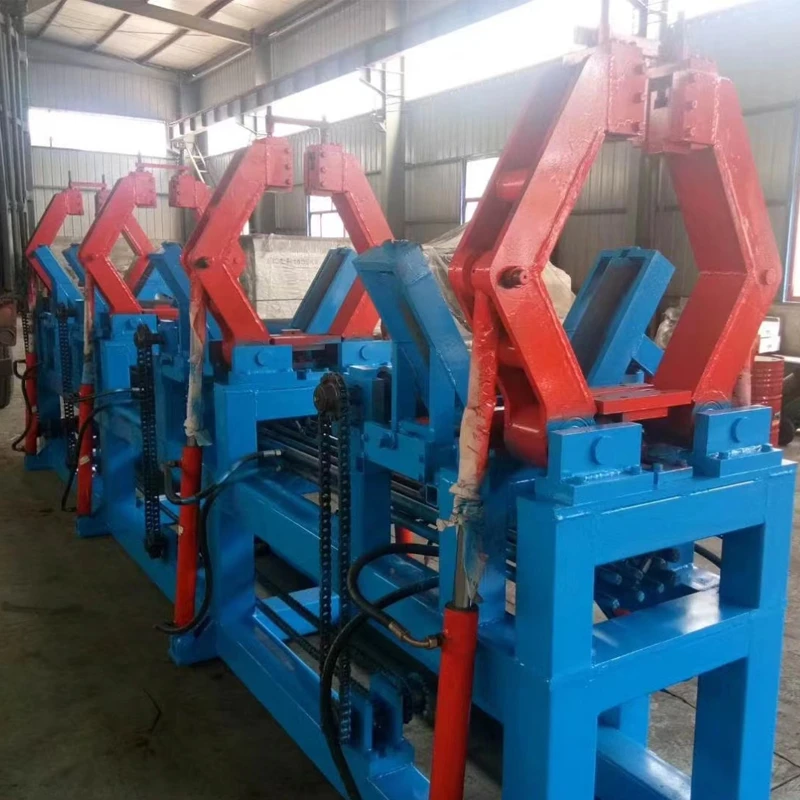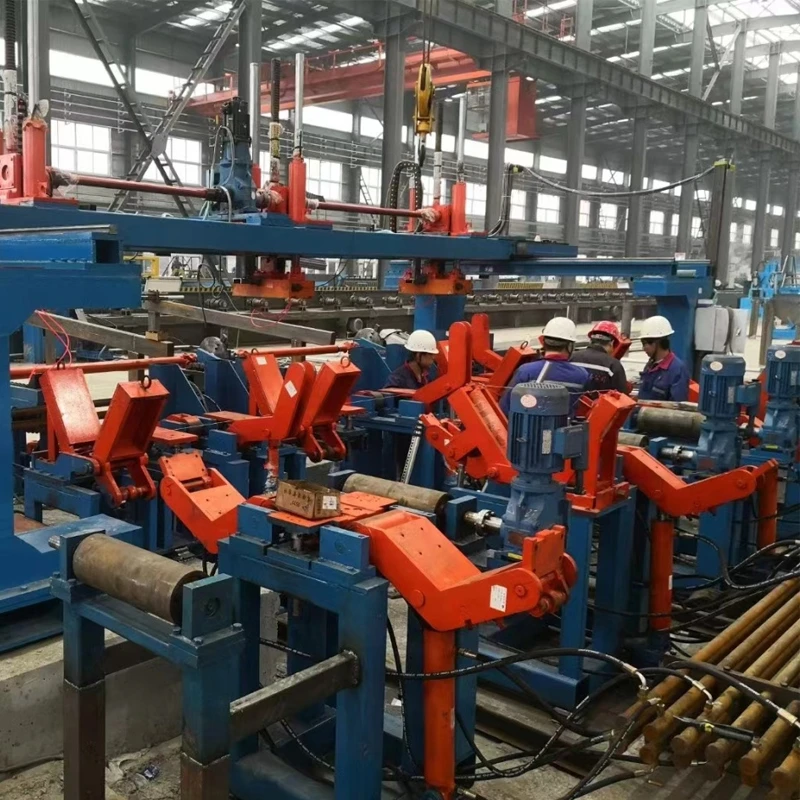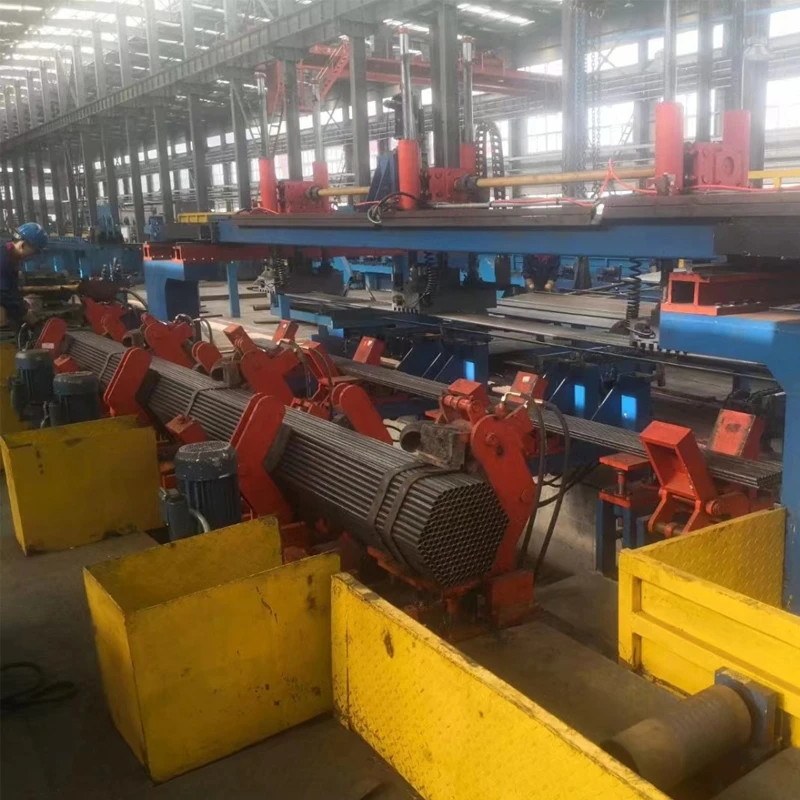Advanced PVC Belling Machine for Efficient Pipe Production
Navigating the Landscape of Modern Pipe Processing: Insights into Belling Machines
In the rapidly evolving landscape of industrial manufacturing, the precision and efficiency of pipe processing machinery are paramount to ensuring infrastructure integrity and operational longevity. The belling machine stands as a critical component in this domain, essential for creating flared ends on pipes, enabling secure and leak-proof connections. This specialized equipment is indispensable across diverse sectors, including petrochemicals, water supply, drainage systems, and construction, where precise pipe joining is non-negotiable. Current industry trends highlight a significant shift towards greater automation, enhanced material compatibility, and superior energy efficiency in belling technology. Manufacturers are increasingly integrating advanced control systems and robust mechanical designs to meet stringent international standards like ISO 9001 and ANSI B16.5, reflecting a global demand for higher quality and reliability. As industries continue to expand, the requirement for machines capable of handling a wider range of pipe materials—from PVC and HDPE to steel and ductile iron—with unwavering accuracy becomes ever more critical. This evolution is driven not only by the need for speed but also by the imperative to reduce waste, minimize operational costs, and ensure environmental compliance, positioning the belling machine as a cornerstone of modern pipe manufacturing. Its pivotal role extends to supporting the production of other crucial components, such as those fabricated by purlin machine, shutter machine, and erw pipe machine, all of which require meticulous dimensional accuracy and material integrity to function optimally in integrated systems.
The Advanced Manufacturing Process of High-Performance Belling Machines
The creation of a high-performance belling machine is a testament to precision engineering, involving a meticulously orchestrated manufacturing process that ensures durability, reliability, and optimal functionality. This process begins with the careful selection of raw materials, typically high-grade steel alloys such such as Cr-Mo alloy steel for critical components like dies and mandrels, and structural carbon steel for the main frame, chosen for their superior strength, wear resistance, and anti-corrosion properties. Key manufacturing processes include advanced casting techniques, particularly for complex components that require intricate geometries and high dimensional stability. This is often followed by forging, which enhances the material's grain structure, improving its mechanical properties and fatigue resistance, vital for machines subjected to continuous operation. Precision CNC machining plays a pivotal role in achieving the exacting tolerances required for the belling dies and forming heads, ensuring perfect concentricity and minimal material stress during the belling process. Post-machining, components undergo specialized heat treatments, such as quenching and tempering, to achieve optimal hardness and toughness, significantly extending the machine's service life, which typically ranges from 15 to 25 years under proper maintenance. Every stage of manufacturing is subjected to rigorous quality control inspections, adhering strictly to international standards like ISO 9001:2015 for quality management systems and ANSI B16.5 for flange and fitting dimensions, guaranteeing that each machine component meets global benchmarks for performance and safety. Non-destructive testing methods, including ultrasonic and magnetic particle inspections, are routinely employed to detect any subsurface defects, ensuring structural integrity. These stringent measures ensure that the finished belling machine not only performs flawlessly but also contributes to energy efficiency and offers exceptional corrosion resistance in demanding operational environments, making it ideal for the petrochemical, metallurgy, and municipal water supply and drainage industries where system reliability is paramount.

Figure 1: Automated belling machine in operation, highlighting precision engineering.
Key Technical Parameters and Performance Specifications of Belling Machines
Understanding the technical parameters of a belling machine is crucial for selecting the right equipment that aligns with specific operational requirements and production goals. These specifications dictate the machine's capacity, efficiency, and the quality of the finished pipe products. Typically, a high-performance belling system is engineered to handle a broad spectrum of pipe diameters, often ranging from 50 mm to 1200 mm, accommodating both smaller conduits and large-diameter pipelines for major infrastructure projects. The machine's capability to process varying wall thicknesses, from 2 mm for lighter PVC pipes to over 25 mm for heavy-duty steel pipes, highlights its versatility. Forming speed, measured in meters per minute or pieces per hour, is a critical metric influencing overall production throughput, with advanced models achieving speeds of up to 10-15 meters per minute, optimizing cycle times and enhancing productivity. Power consumption, expressed in kilowatts (kW), provides insight into the machine's energy efficiency, with modern designs incorporating servo motor technology to minimize energy waste. Achieving high forming accuracy, typically within a tolerance of ±0.2 mm for bell diameter and ±0.5 degrees for bell angle, ensures consistent and reliable pipe connections, minimizing rework and material waste. Moreover, the integration of programmable logic controllers (PLCs) with human-machine interfaces (HMIs) allows for precise control over the belling process, enabling operators to fine-tune parameters for different pipe materials and specifications. Advanced belling machine systems often feature automated loading and unloading mechanisms, further reducing manual labor and enhancing operational safety. These intricate details, combined with robust construction materials and sophisticated control algorithms, ensure that the belling process is not only rapid but also consistently produces high-quality, perfectly formed pipe bells, directly contributing to the structural integrity of complex piping networks in critical applications across the petrochemical, metallurgical, and water treatment sectors.
Typical Belling Machine Specifications
| Parameter | Typical Range/Value | Impact on Performance |
|---|---|---|
| Pipe Diameter Range | DN50 - DN1200 (2 - 48 inches) | Defines machine versatility across various pipeline projects. |
| Wall Thickness Capacity | 2 mm - 25 mm (0.08 - 1 inch) | Indicates suitability for different pipe materials and pressure ratings. |
| Forming Speed (Average) | 8-15 pipes/minute (depending on size) | Directly impacts production throughput and efficiency. |
| Power Consumption | 15 kW - 75 kW (Variable) | Influences operational costs and energy footprint. |
| Forming Accuracy | Bell Diameter: ±0.2 mm; Angle: ±0.5° | Ensures tight, leak-proof connections and reduces material waste. |
| Control System | PLC with HMI Touchscreen | Facilitates precise parameter adjustment and ease of operation. |
| Applicable Materials | PVC, HDPE, PP, Steel, Ductile Iron | Determines the range of pipe types the machine can process effectively. |
Versatile Application Scenarios and Distinct Technical Advantages
The pervasive utility of a belling machine extends across a multitude of critical industrial applications, each benefiting from its ability to create precise, durable pipe connections. In the petrochemical industry, where pipeline integrity is paramount for safe and efficient fluid transfer, belling machines are instrumental in preparing pipes for high-pressure systems, preventing leaks and ensuring operational safety. For metallurgical plants, these machines facilitate the production of precise pipe segments for conveying gases, liquids, and slurries, often under extreme temperatures and corrosive conditions, making the belling machine a cornerstone in manufacturing high-strength pipes for furnace linings and exhaust systems. The water supply and drainage sectors are perhaps the most widespread beneficiaries, relying on belling technology to produce the vast networks of PVC and HDPE pipes that form urban and rural water infrastructure, ensuring clean water delivery and efficient wastewater management without significant losses or environmental contamination. Beyond these core industries, belling machines are also crucial in constructing heating, ventilation, and air conditioning (HVAC) systems, as well as in the fabrication of specialized components for renewable energy installations. A primary technical advantage of modern belling technology is its exceptional energy efficiency; advanced hydraulic and servo-driven systems significantly reduce power consumption compared to older pneumatic models, leading to substantial operational cost savings. Furthermore, the inherent design of these machines, coupled with the use of corrosion-resistant materials and specialized coatings on forming dies, provides superior protection against chemical degradation and abrasive wear, extending the lifespan of both the machine and the final product. The precision achieved through computerized numerical control (CNC) ensures consistent pipe bell dimensions, critical for seamless assembly and long-term system reliability, distinguishing high-quality belling machine output from less precise alternatives. This blend of efficiency, durability, and accuracy makes the belling machine an indispensable asset in modern manufacturing.

Figure 2: Pipe belling process in an industrial setting, demonstrating scale.
Comparative Analysis: Key Considerations in Belling Machine Selection
When considering the acquisition of a belling machine, prospective buyers face a myriad of choices, with significant distinctions existing between different machine types and manufacturers. The primary differentiation often lies in the belling method employed, such as heated die belling, cold belling, or compression belling, each suitable for specific pipe materials and wall thicknesses. Heated die belling is prevalent for PVC and plastic pipes, utilizing controlled heat to soften the pipe end before forming, ensuring a smooth, stress-free bell. Cold belling is typically applied to metallic pipes, relying on hydraulic pressure to expand the pipe end without heat, demanding robust machine construction. Compression belling offers a balance, often used for smaller diameter pipes. Manufacturers differentiate themselves not only by the technology they employ but also by their level of automation, after-sales support, and customization capabilities. Some specialized manufacturers focus on fully automatic lines that integrate belling with cutting, chamfering, and stacking, significantly reducing labor costs and increasing throughput for high-volume production. Others excel in semi-automatic models, offering flexibility for varied batch sizes and quick changeovers. Key factors for comparison include the machine’s energy efficiency, the longevity of critical wear parts like dies, the sophistication of the control system (e.g., Siemens or Allen-Bradley PLCs), and the availability of local technical support and spare parts. While some manufacturers may offer lower initial costs, a thorough evaluation of total cost of ownership (TCO), including maintenance, energy consumption, and potential downtime, is crucial. Moreover, the reputation for adhering to international safety standards, such as CE for European markets and UL for North America, signifies a commitment to quality and operator safety. Understanding these nuances is critical for businesses to make an informed investment that aligns with their production needs, material specificities, and long-term operational sustainability, ensuring that the chosen belling machine delivers optimal performance for years to come.
Belling Machine Type Comparison
| Feature/Type | Heated Die Belling | Cold Belling | Hydraulic Compression Belling |
|---|---|---|---|
| Primary Material | PVC, HDPE, PP (Plastics) | Steel, Stainless Steel, Ductile Iron | Various plastics, smaller diameter metals |
| Process | Heat and then mechanically expand | Mechanical expansion via hydraulic pressure | Controlled radial compression and expansion |
| Advantages | Smooth finish, minimal stress, high speed for plastics | No heat distortion, maintains material properties | Versatile, good for specific joint types (e.g., push-fit) |
| Disadvantages | Energy intensive (heating), limited to plastics | High machine force required, potential for material hardening | Can be slower, might not suit very large diameters |
| Typical Application | Water/Drainage PVC pipe production | Industrial steel pipelines, ERW pipe finishing | Smaller diameter conduit, electrical piping |
Tailored Belling Solutions and Real-World Application Case Studies
Recognizing that off-the-shelf solutions rarely fit every unique industrial requirement, leading manufacturers offer highly customized belling machine configurations designed to address specific production challenges and material complexities. This adaptability is critical for industries with diverse pipe dimensions, material compositions, and desired connection types. Customization often involves designing specialized belling dies and mandrels for non-standard pipe diameters or unique bell profiles, such as those required for specific sealing mechanisms or structural applications. Furthermore, machine integration can be customized, allowing the belling machine to seamlessly interface with existing production lines, including upstream extrusion equipment or downstream handling and stacking systems, optimizing the overall workflow. Automation levels can also be tailored, ranging from semi-automatic setups for lower volume, high-variability production to fully automated, robot-assisted systems for continuous, high-speed output. A compelling example of a successful customized solution involves a large-scale municipal water project in Southeast Asia, where bespoke belling machines were engineered to process 800mm diameter HDPE pipes with an increased wall thickness of 30mm, overcoming material stress challenges and ensuring robust connections for a critical water supply network. Another case involved a European steel mill that required a specialized cold belling machine capable of handling ERW (Electric Resistance Welded) steel pipes for structural applications, with an integrated internal chamfering unit to improve flow characteristics and reduce turbulence. The client feedback emphasized not only the precision and efficiency of the custom machine but also the significant reduction in labor costs and improved safety, demonstrating the tangible benefits of a tailored approach. Such custom engineering, backed by extensive R&D and collaboration with clients, ensures that the belling technology precisely meets the demanding specifications of modern infrastructure and industrial processes, delivering optimal performance and long-term value.

Figure 3: Customized belling machine designed for specific pipe profiles.
Ensuring Reliability: Quality Assurance and Comprehensive After-Sales Support
The long-term value of a belling machine extends far beyond its initial purchase, hinging significantly on the robustness of its quality assurance protocols and the reliability of its after-sales support. Reputable manufacturers adhere to stringent quality management systems, evidenced by certifications like ISO 9001:2015, ensuring consistent product quality from design to delivery. Furthermore, compliance with regional safety and performance standards such as CE marking for the European Union, UL certification for North America, and often specific industry certifications like those from the American Petroleum Institute (API) for oil and gas applications, provides an additional layer of trustworthiness. Before dispatch, every belling machine undergoes rigorous factory acceptance testing (FAT), simulating real-world operational conditions to verify performance parameters, accuracy, and safety features. Delivery timelines are typically communicated transparently, with lead times varying based on customization levels, usually ranging from 8 to 16 weeks for standard models and longer for bespoke solutions, all managed with precise logistical coordination. A comprehensive warranty, often spanning 12 to 24 months from installation or commissioning, covers manufacturing defects and ensures peace of mind for the buyer. Beyond the warranty period, commitment to customer support is demonstrated through readily available spare parts, often guaranteed for up to 10-15 years, minimizing downtime. Technical assistance is provided through multiple channels, including remote diagnostics, on-site service by skilled engineers, and comprehensive training programs for client personnel to ensure proficient machine operation and maintenance. This holistic approach, combining meticulous manufacturing with proactive support, is crucial for maximizing uptime and extending the operational life of the belling machine, ensuring consistent output quality and sustained return on investment for the end-user in critical sectors such as metallurgy, petrochemicals, and general infrastructure development.

Figure 4: Quality control measures for belling machine components.
Frequently Asked Questions (FAQ)
Q1: What is the typical service life of a well-maintained belling machine?
A1: With proper maintenance and adherence to operational guidelines, a high-quality belling machine can reliably perform for 15 to 25 years. This longevity is supported by robust component selection, precise manufacturing, and readily available spare parts.
Q2: Can belling machines handle different pipe materials, such as PVC, HDPE, and steel?
A2: Yes, modern belling machine technology is designed for versatility. Specific models or customized configurations can handle a wide array of materials including PVC, HDPE, PP, and various grades of steel or ductile iron, often requiring different tooling or belling methods.
Q3: What are the primary quality control standards applied during the manufacturing of belling machines?
A3: Reputable manufacturers adhere to international standards such as ISO 9001:2015 for quality management, alongside material-specific standards like ASTM for steel or DIN for plastics. Functional and safety compliance often includes CE marking and UL certifications.
Q4: What kind of after-sales support and warranty can I expect?
A4: Typically, a 12 to 24-month warranty covers manufacturing defects. Comprehensive after-sales support includes technical assistance, spare parts availability (often guaranteed for 10-15 years), remote diagnostics, on-site service, and operator training programs.
Future Outlook and Innovation in Belling Technology
The trajectory of belling machine technology is characterized by continuous innovation, driven by the increasing demands for automation, efficiency, and sustainability within the global manufacturing sector. Future developments are poised to integrate more sophisticated automation and robotic systems, reducing human intervention and enhancing precision further. The advent of Industry 4.0 principles will see belling machine systems equipped with advanced sensors and IoT connectivity, enabling real-time data monitoring, predictive maintenance, and remote diagnostics, thereby minimizing unplanned downtime and optimizing operational efficiency. Artificial intelligence and machine learning algorithms will play a growing role in optimizing belling parameters for new or composite materials, ensuring consistent quality even with complex pipe characteristics. Furthermore, there will be a strong emphasis on developing more energy-efficient hydraulic and servo-electric drives, significantly reducing the carbon footprint of pipe manufacturing operations. Innovations in material science will also influence belling technology, leading to the development of more durable and adaptable belling dies and mandrels capable of processing novel pipe materials with enhanced properties, such as advanced polymer composites or hybrid metal alloys. The focus on modular designs will allow for greater flexibility and scalability, enabling manufacturers to quickly adapt production lines to changing market demands or new product specifications. Sustainability considerations will also push for processes that minimize material waste and optimize energy consumption throughout the belling process, aligning with global environmental objectives. These advancements underscore a commitment to evolving belling machine capabilities, ensuring they remain at the forefront of pipe processing technology, providing essential support for critical infrastructure and industrial applications worldwide.
References
- International Organization for Standardization (ISO). (2015). ISO 9001: Quality Management Systems – Requirements.
- American National Standards Institute (ANSI). (2020). ANSI B16.5: Pipe Flanges and Flanged Fittings.
- European Committee for Standardization (CEN). (2018). EN 1555: Plastic piping systems for the supply of gaseous fuels – Polyethylene (PE).
- Smith, J. A., & Brown, P. R. (2021). Advances in Polymer Pipe Manufacturing for Water Infrastructure. Journal of Civil Engineering Innovations, 18(3), 210-225.
- Chen, L., & Wang, Q. (2022). Finite Element Analysis of Stress Distribution in Cold Belling of Steel Pipes. International Journal of Material Processing Technology, 45(1), 87-102.
-
High-Frequency Straight Seam Welded Pipe Production Line-BzZhou Xinghua Machinery Equipment Manufacturing Co., Ltd.|Steel Pipe Manufacturing, Precision EngineeringNewsAug.18,2025
-
High Quality Enamel/Pre-seasoned Camping Square Cast Iron Grill Pan-BzZhou Xinghua Machinery Equipment Manufacturing Co., LTD.NewsAug.18,2025
-
High Quality Enamel/Pre-seasoned Camping Square Enamel Cast Iron Grill Steak Pan - BzZhou Xinghua Machinery Equipment Manufacturing Co., LTD.NewsAug.18,2025
-
Automatic Pipe Belling Machine - Precision & SpeedNewsAug.18,2025
-
Enamel Cast Iron Grill Pan - BzZhou Xinghua|Customizable,DurableNewsAug.18,2025


